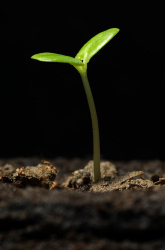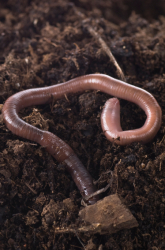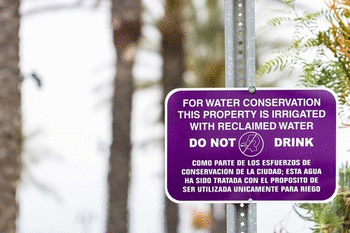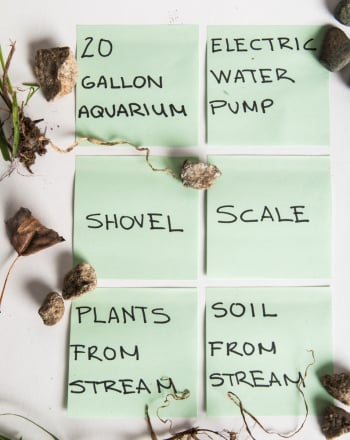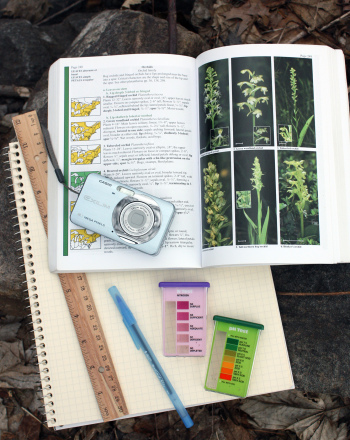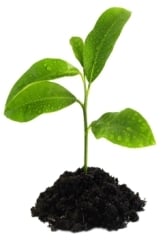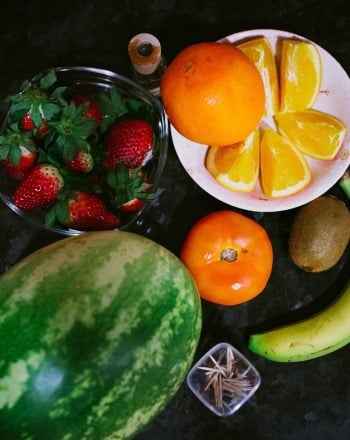Science project
How does Phototropism Affect the Growth in Green Plants?
Grade Level: 6th - 7th; Type: Life Science
Objective:
To determine whether plants are phototropic and provide evidence to substantiate the project`s results.
Research Questions:
- What are tropisms and how do they affect the life of green plants?
- What is heliotropism? How does it differ from phototropism?
- Who was Frits W.Went and what did he discover that was of great significance in plant growth?
- What role did Charles Darwin play in the area of plant growth?
- What are auxins? What role do they play in plant growth?
- What does the unequal concentration of auxins produce? What does that result In?
On the information level, this experiment serves to acquaint students with basic information on one of the key processes involved in and crucial to the growth and development of green plants. One of the processes involved is photosynthesis which is key in producing food for the plant. Photosynthesis is defined as producing something in the presence of light. We know that plants respond to many different stimuli in their environment. These stimuli are gravity, water, touch and light. These responses are called tropisms. The plant’s response to light is called phototropism. All of these tropisms are crucial to the plants survival. From our own experience, we know that the roots of plants respond to gravity by moving toward the ground. Also from experience we know that these roots are hydrotropic, namely the roots search for water. If we were to look closely at some plants, we may see the tendrils of vines fastening themselves around trees and bushes. This is called thigmotropism, namely, a response to touch. In this project we are searching for clear cut evidence as to the effect of light on green plants. How do green plants respond to light? We know that they do, but how do they do it? In sum, although we may think that plants do not move, they do move, all the time, but very, very, slowly responding to various stimuli. Plants are on the move! We call it growth. If there is unequal growth on one side of a plant, will it bend toward the other side? What precisely has phototropism to do with this? What is required is evidence to substantiate this uneven growth, specifically the key role of light in this process. The task is yours. Your experimentation coupled with your research on auxins will serve to further explain the results you obtain and provide a clear picture of what is actually occurring.
This science fair experiment also serves to acquaint students with the essential processes of sciencing such as the importance of the use of a control when required, of identifying dependent and independent variables, of selecting a large enough sample of subjects when applicable to the objective, of accurate and organized data collection, of pictorial and or graphic presentation of data and of being able to make better judgments as to the validity and reliability of their findings. They take on the role of scientists and in the process they learn to act as scientist.
Materials:
- 6 geranium plants of the same size with almost the same leaf configuration
- 4 cardboard boxes to hold some of the plants
- razor blades
- a light source
- namely a window receiving direct sunlight,
- water, a measuring cup
- a watering can
- a pen
- labels
- and a camera which is optional should you want to take photos for display purposes for the Science Fair.
Experimental Procedure:
- Gather all of the materials you will need for this project. These include the 6 geranium plants of the same size with almost the same leaf configuration,4 cardboard boxes to hold some of the plants, razor blades, a light source, namely a window receiving direct sunlight, water , a measuring cup, a watering can, a pen and labels.( a camera is optional)
- Copy the Chart provided on the next page so that you can readily record your observations.
- For both practical and dramatic value, you may wish to photograph the preparation stages as well as your plants starting with the before stages and continuing to the final stage.
- Arrange the plants into 3 groups of two. Label the sets of plants as follows: 1FL and 2FL (exposed to full light, no barriers), 1 PL and 2 PL (exposed to partial light, light only on one side) and 1NL and 2NL (no light, completely enclosed by the boxes).
- Prepare the boxes. In exposed to full light you have no need for boxes, in partial light you will. Remove one side of two of the boxes and in the no light category, keep the boxes intact.
- On your data chart record the appearance of each group of plants as identical or almost identical. Note any variation at the start before changing the conditions.
- Water all of the plants using the same amount of water. Continue watering each day. If you are taking photos, start now. Place group 1 of exposed to full light in the direct sunlight on a window sill, place group 2 in their individual boxes on the window sill with the closed side blocking the sun and place group 3 on the sill, completely enclosed in their boxes.
- Keep the plants in this location for four days. On day 4, observe each of the plants and record your observations in your chart. Note the position of the leaves in each of the three conditions.
- On day 6 record your observations. Now take the plants in group 2 and place them in full sunlight .Take the plants in group 3 and place them in partial sunlight.
- On day 9, view all of the plants and record your observations. Note any changes. Place all of the plants in full sunlight.
- Review all of the data. What did you conclude? Given your research on auxins, how do you explain your results? Were the results reversible or was their irrevocable damage? Why was it wise to use two plants in each group? Had you used a greater number of plants, how would it have affected your results? More reliable? More valid? Were you to extend your research in this area, what might you investigate the next time around? In the area of growth in animals are there “auxins”? Something to think about?
Chart of Data
| Plant groups | Initial Descriptions | Day4 | Day 6 | Day 9 | Conclusions |
| Group 1: full exposure | |||||
| Group2: Partial exposure | |||||
| Group 3: No exposure |
Terms/Concepts: Photosynthesis, chlorophyll, tropisms, hydrotropism, gravitropism, thigmotropism,phototropism, germination, auxins, indole-3-acetic acid, differential growth, natural light, artificial light and plant growth.
References:
Towle, A. (1993) Modern Biology Harcourt, Brace, Jovanovich
Education.com provides the Science Fair Project Ideas for informational purposes only. Education.com does not make any guarantee or representation regarding the Science Fair Project Ideas and is not responsible or liable for any loss or damage, directly or indirectly, caused by your use of such information. By accessing the Science Fair Project Ideas, you waive and renounce any claims against Education.com that arise thereof. In addition, your access to Education.com's website and Science Fair Project Ideas is covered by Education.com's Privacy Policy and site Terms of Use, which include limitations on Education.com's liability.
Warning is hereby given that not all Project Ideas are appropriate for all individuals or in all circumstances. Implementation of any Science Project Idea should be undertaken only in appropriate settings and with appropriate parental or other supervision. Reading and following the safety precautions of all materials used in a project is the sole responsibility of each individual. For further information, consult your state's handbook of Science Safety.

